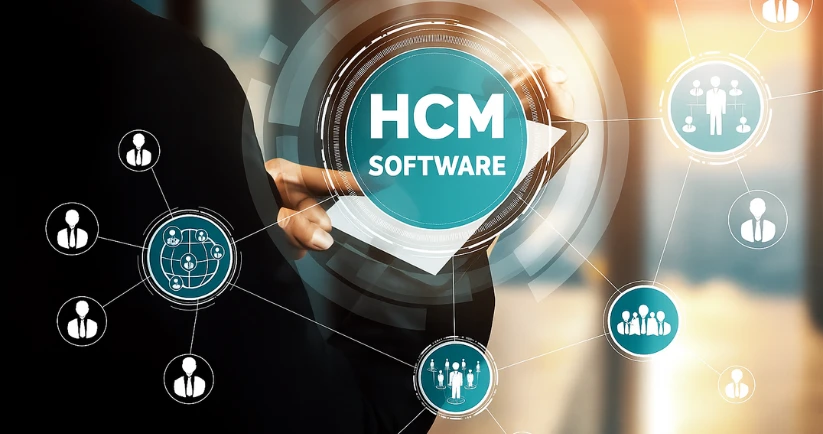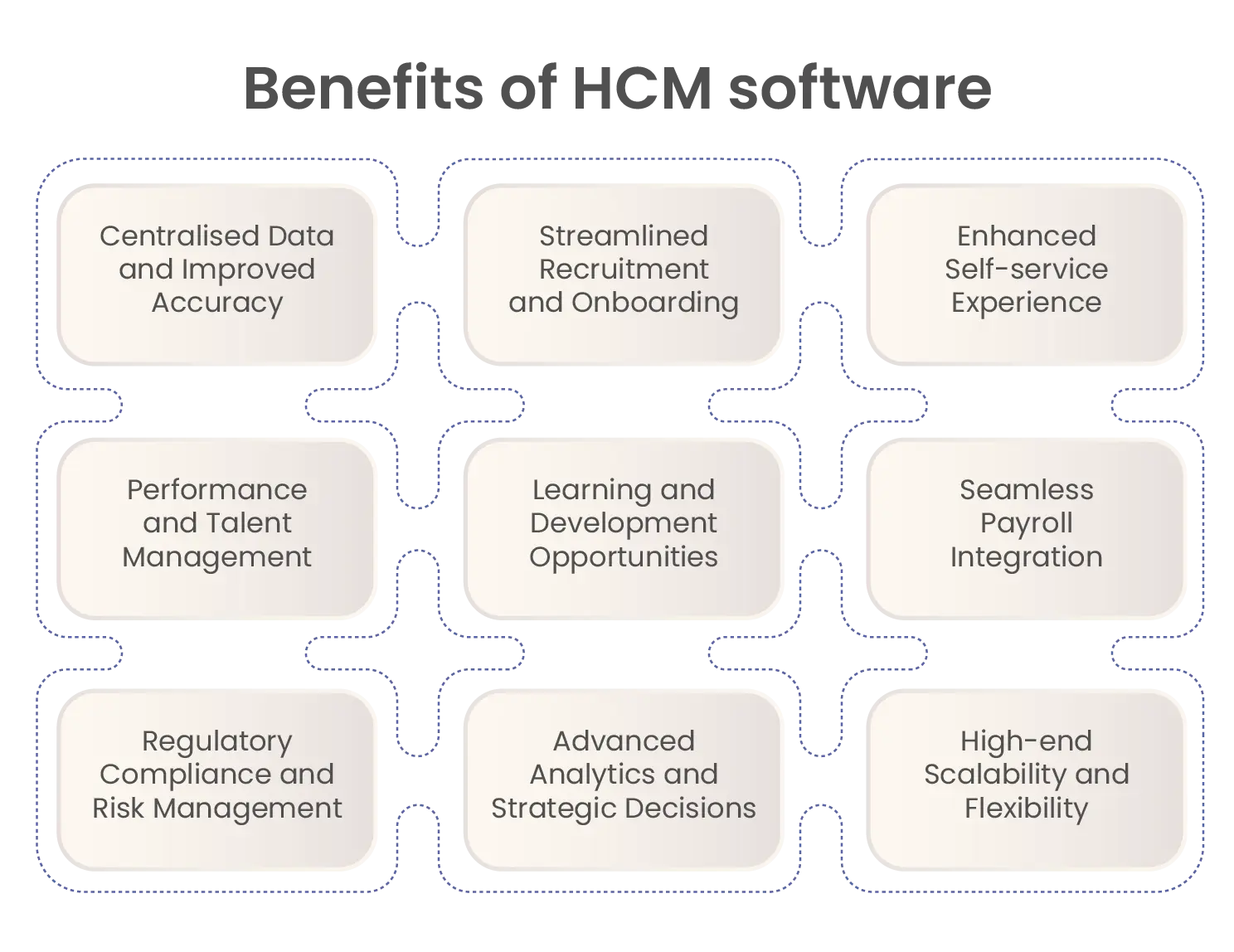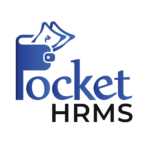
Top 10 HCM Software in 2025: Features, Benefits & Comparison
Table of Contents

Reading Time: 10 minutes
Human capital management software (HCM) is an HRMS that principally manages HR practices in a broader sense. It includes everything an HRMS does, but also adds strategic and developmental HR functions, such as talent acquisition and retention, workforce planning, learning and development, succession planning, employee engagement, performance management, and other analytics for workforce strategy.
This section highlights the benefits and process of integrating the HCM into the organisation. Let’s explore.
What is HCM Software?
The Human Capital Management system is a comprehensive digital platform that optimises the workforce, encompassing the employee lifecycle from hiring to performance management, rewards, payroll, increments, learning, and workforce analytics.
It is considered the broader version of the HRMS portal. In addition to HRMS functions, the HCM combines core HR functions, such as employee records, payroll, and time tracking, with strategic tools for talent management, succession planning, and employee development.
Top 10 HCM software in 2025
HCM suites improve HRMS features and functionalities. In India, numerous HRMS solution providers offer cutting-edge HCM solutions that streamline HR operations, enhance employee engagement, and drive organisational growth:
1. Pocket HRMS
A cloud-based HCM software with high-end automation assistance streamlines the entire employee lifecycle—from hiring and attendance to payroll, employee engagement, performance tracking, and offboarding.
Key Features
- It ensures an AI-powered chatbot’s smHRty for instant employee support.
- It provides Integrated payroll, leave, and attendance management.
- It comes with a user-centric ESS portal and mobile app for on-the-go HR functions.
- It gives customizable modules with seamless third-party integrations.
Ideal For
Startups, SMEs, advertising agencies, and other growing businesses, as well as big MNCs, are seeking an affordable, all-in-one HR automation platform.
2. PeopleStrong
PeopleStrong is an enterprise-grade Human Capital Management (HCM) platform that supports the entire employee lifecycle—from recruitment and onboarding to performance management and succession planning.
Key Features
- Scalable architecture with enterprise-grade security.
- Trusted by over 500 large enterprises across the Asia Pacific.
- Comprehensive modules for talent acquisition, core HR, payroll, and analytics.
Ideal For
- Large enterprises are seeking a unified Human Capital Management (HCM) solution.
3. Workday
Workday is a comprehensive, cloud-based HR suite trusted by the world’s leading global enterprises.
Key Features
- Unified data core combining operational, financial, and employee data.
- Real-time workforce insights with Workday Illuminate™ AI engine.
- Advanced analytics for workforce planning and performance metrics.
Ideal For
- Large organisations require deep workforce insights and scalability.
4. SAP SuccessFactors
SAP SuccessFactors is a leading cloud-based Human Capital Management (HCM) solution designed to help organisations manage their workforce more effectively. Built to address the full employee lifecycle—from hiring and onboarding to performance management and succession planning—SuccessFactors empowers businesses to align their people strategy with company goals.
The left window shows the future of the right window.
Key Features
- AI-enabled career and learning recommendations.
- Robust talent management spanning recruiting to succession planning.
- Advanced people analytics for data-driven HR decisions.
Ideal For
- Enterprises with distributed workforces seeking global scalability.
5. Oracle Fusion Cloud HCM
An all-in-one solution to manage HR processes across the entire employee lifecycle.
Key Features
- Personalised employee experiences with the Oracle ME platform.
- Embedded AI agents for automation and insights.
- Unified HR, payroll, time, and talent data for consistent decision-making.
Ideal For
- Enterprises are looking for deep customisation and automation.
6. Zoho People Plus
Zoho People Plus is an all-in-one, cloud-based HR suite designed to streamline and unify every aspect of human resource management. It brings together essential tools such as employee onboarding, attendance tracking, performance appraisal, payroll integration, and employee self-service into one seamless platform.
Key Features
- Integrated modules for the entire employee lifecycle.
- Customizable workflows and automation.
- Seamless integration with other Zoho applications.
Ideal For
- Growing teams and enterprises are seeking a unified HR solution.
7. ADP Workforce Now
An all-in-one cloud-based HCM platform tailored for midsize and large businesses.
Key Features
- Robust solutions for payroll, HR, benefits, and talent management.
- Unified interface for streamlined HR operations.
- Advanced analytics and reporting capabilities.
Ideal For
- Midsize to large businesses seeking comprehensive HR solutions.
8. Darwinbox
A modern HRMS platform designed for mid-sized and large enterprises, offering a mobile-first approach and strong automation capabilities.
Key Features:
- Modules for recruitment, onboarding, core HR, performance management, and more.
- Advanced analytics and reporting.
- Mobile-friendly interface with strong automation features.
Ideal For
- Medium and large businesses seeking a comprehensive HRMS solution.
9. Keka
An HR solution designed specifically for the needs of small and medium-sized businesses in India.
Key Features
- Modules for recruitment, onboarding, core HR, payroll, leave & attendance, and more.
- User-friendly interface and affordable pricing.
- Comprehensive reports and analytics.
Ideal For
- Small and medium businesses seeking an affordable and user-friendly HR solution.
10. GreytHR
A well-established HR software solution that helps streamline HR processes and empower employees through various modules.
Key Features
- Automated payroll processing, leave & attendance management, and core HR functionalities.
- Employee self-service portal and compliance management.
- Reports and analytics for informed decision-making.
Ideal For
- Small and medium businesses seeking core HR functionalities.
Key Features to Look for in HCM Software
The best HCM software streamlines the entire HR process. It not only handles hiring but also supports recruiters in their administrative practices. With the power of cloud technology and next-gen AI, today’s HCM solutions go beyond automation—they intuitively manage the entire employee lifecycle, making HR smarter and faster than ever. This section will highlight the key features of HCM that help employers better understand the software.
➔ Flexible Architechture
HCM provides a full-suite HR system, where the system and assisted tools ensure seamless, custom support for the HR solution without disrupting the existing system. With HCM’s assistance, the company can plan for any software or tool integration and build its stack according to the company’s requirements.
➔ Rapid Implementation
The company experience a smooth and simplified implementation process during HCM, adding to the company’s existing software or building frameworks. HCM doesn’t make employers wait long; they can experience enterprise-level rollouts in under 60 days, not quarters. Concisely, HCM software delivers a polished and updated employee management system to the company.
➔ Multi-Country Support
An HCM software handles multi-region-specific HR practices. It supports multiple currencies, assists in incorporating region-specific policies, and helps to apply appropriate tax regulations. Moreover, the system can smoothly align with local compliance requirements and labour laws in different countries.
➔ Enterprise-Grade Security
HCM comes with robust security features that protect the complete HRMS suite. It provides end-to-end encryption for mass data storage, introduces cloud hosting, delivers seamless access controls, and remains updated by laws and global privacy standards. Often, companies don’t have to integrate third-party security assistance to embed high security. HCM performs as a one-stop solution here.
➔ Consumer-Grade Self-Service
HCM works as a suite that welcomes cutting-edge automation with Gen AI support. Hence, Employees can enjoy an updated version of employee self-service without any manual assistance. In Pocket HRMS, the system utilises smHRty to automate responses to any random queries related to payroll, documentation, verification, attendance, performance, expense, and more.
➔ Smart Attendance With Geofencing
HCM’s GPS-based check-in and check-out system helps employers accurately track employee attendance and provide an exact record during employee data calculation. With the support of HCM, Remote workers can maintain their attendance sheets through GPS tracking activities and avoid any issues during attendance marking. Besides, the system manages hybrid or mobile workforces without manual intervention or hardware dependency.
➔ Third-Party Integrations
HCM is a human resource-based suite that does not include HRMS; it also manages large ERPs and CRMs. So, it has a unique feature of smoothly integrating with multiple applications. Therefore, if companies integrate HCM into their system, they essentially don’t need to add any third-party assistance. Additionally, the system provides seamless API connectivity with payroll, finance, performance, and communication platforms, allowing HR teams to work efficiently without needing to toggle between multiple tools.
Key Benefits of an HCM Solution
However, HRMS efficiently manages a workforce; it is no longer just about payroll and attendance—it involves nurturing talent, optimising performance, and aligning HR processes with strategic goals. Here, HCM is introduced. It is also considered a comprehensive suite that enables companies to leverage efficient CRM and ERP solutions.
Here are the details on why a company should use an HCM solution and whether it can replace HRMS.

1. Centralised Employee Data and Improved Accuracy
One of the most fundamental advantages of an HCM solution is the centralisation of employee data. Instead of managing disparate spreadsheets and paper records, all HR-related information, such as employee profiles, job history, compensation, benefits, and performance reviews, is stored in a unified platform.
HCM ensures no data duplication, maintains accuracy, and improves and updates compliance and other regulatory requirements, allowing the HR team to perform smoothly and accurately.
2. Streamlined Recruitment and Onboarding
One of the primary tasks of the human resources team is to identify the ideal candidate for a specific role. An HCM automates the process by introducing robust applicant tracking and on-time job postings, filtering candidates based on predefined criteria, and other tasks during interview scheduling.
After hiring candidates, HCM ensures a seamless digital onboarding process and initiates a smooth transition by guiding new employees through company policies, compliance forms, training materials, and team introductions—all before their first day of work. This saves administrative time and helps new hires feel welcome and productive from the start.
3. Enhanced Employee Experience and Self-Service
Modern employees value transparency, convenience, and control over their professional lives. HCM solutions empower them with self-service portals that allow them to manage their data, submit leave requests, view pay stubs, update benefits, and access learning resources—all without needing to contact HR. This autonomy enhances employee satisfaction, reduces HR workload, and creates a more engaged workforce.
4. Performance and Talent Management
A sound HCM system helps organisations identify, nurture, and retain high performers. The system helps with goal setting, generating continuous feedback, ensuring 360-degree assessments, checking performance reviews, and more.
With it, managers can align employee objectives with business goals.
Additionally, Human capital management oversees the entire talent management process by implementing effective succession planning. Hence, leadership requirements improve, which is reflected in a reduced risk of employee turnover.
5. Learning and Development Opportunities
Providing potential training is essential for keeping employees motivated and competitive, as well as maintaining employee retention. HCM platforms introduce integrated learning management systems (LMS) that offer customised training modules, certifications, and skill-building courses.
Employers can take free customised courses or paid courses for self-improvement. Moreover, the platforms can track participation and progress, enabling employees and managers to assess skill gaps and identify development opportunities.
Whenever employees receive sufficient learning opportunities, they are less likely to leave. Hence, the company’s focus is on talent retention and massive productivity.
6. Seamless Payroll Integration
The HCM streamlines payroll processing through automation within the organisation. The system offers multiple payroll functionalities and integrates with third-party providers to automate calculations, deductions, tax filing, and direct deposits. With the presence of HCM, the organisation gains an automated payroll system, where employees receive their salaries on time and accurately.
During the appraisal cycle, HCM automates salary calculations, seamlessly integrating increment figures so that employers do not have to perform manual calculations. It gives employees clear, real-time visibility into their earnings and tax documentation.
7. Regulatory Compliance and Risk Management
Staying compliant with labour laws, health and safety regulations, tax codes, and industry standards is critical—and often challenging. HCM platforms help mitigate these risks by automating regulatory updates, offering audit trails, and generating necessary reports. From GDPR to OSHA and FMLA, HCM systems keep organisations on the right side of the law, avoiding costly penalties and reputational damage.
8. Advanced Analytics and Strategic Decision-Making
Delivering data-driven decisions is the benchmark of every organisational success. HCM provides powerful analytic dashboards that assist HR leaders in tracking key HR metrics, which include employee turnover, absenteeism, performance ratings, and engagement scores.
Moreover, the system ensures that workforce trends are updated, streamlining future hiring needs and mitigating burnout. With these insights, leadership can proactively optimise workforce planning and align HR strategies with business objectives.
9. High-end Scalability
HCM assures end-to-end scalability to the organisation, whether a startup with 10 employees or a global enterprise with thousands. HCM solutions can scale to meet an organisation’s evolving needs. Cloud-based platforms provide flexibility to support remote teams, integrate with other business tools (such as CRM or ERP systems), and accommodate industry-specific requirements. As the workforce evolves, with trends such as gig employment and remote work becoming increasingly prominent, HCM systems enable companies to remain agile and future-ready.
Choosing the right HCM software for your organisation
Choosing the right software to handle a company’s daily requirements can be challenging. The first query that comes to mind is whether choosing HCM is beneficial or a waste of money. Big companies, such as multinational corporations (MNCs), have sufficient funds to welcome human capital management (HCM), but do start-ups need them? Let’s explore how to choose the right HCM software.
➔ Scalability
Before subscribing to any HCM, companies should check its scalability and analyse whether the software is appropriate for their current and future requirements. They should ensure that they will be able to use the software down the line, as changing it incurs additional expenses.
➔ Localization
Before integration, knowing the purpose of welcoming the application is essential. If one of the primary focuses is handling a remote workforce, particularly multinational employees, then the HCM is the ideal selection. Otherwise, sticking with the HRMS is also preferable for a startup or mid-range company.
➔ Cost Effective
Companies often buy HCM software without analysing its cost in market scenarios. They may also opt for some extra features at a considerable cost, which can be unnecessary. Therefore, it is also essential for the company to understand the details of HCM, including what the software provides and its key features or functions, and create a budget-friendly plan accordingly.
➔ Integration
When a company runs multiple software systems, integrating the human capital management (HCM) system can be a challenging task. Before proceeding with the integration, it is essential to verify whether the HCM system positively accepts the existing applications and other enterprise systems, such as ERP and CRM systems, to facilitate data exchange and streamline processes.
➔ Support and Training
Integrating HCM is not the ultimate solution. Management should be aware of whether HR can smoothly use its features and functionalities. Therefore, after integration, end-to-end support and training must be provided so that company personnel can utilise it effectively.
Companies should be careful to ensure that the training courses are aligned with the organisation’s goals and objectives.
FAQs on HCM software
1. Does HCM Software include payroll and compliance features?
Yes, most HCM software includes built-in payroll and compliance tools to efficiently manage salaries, taxes, and labour laws efficiently, reducing manual errors and ensuring regulatory adherence.
2. How secure is cloud-based HCM Software?
Cloud-based HCM software typically uses advanced encryption, multi-factor authentication, and regular security audits to protect sensitive employee data, ensuring enterprise-grade security.
3. Who should use HCM Software?
HCM software is ideal for businesses of all sizes that seek to streamline HR operations, enhance workforce management, and ensure scalable, data-driven HR decision-making.
4. How long does it take to implement HCM Software?
Implementation varies by solution and business size, but many cloud-based HCM systems can be deployed in as little as four to eight weeks with proper planning.
5. How much does HCM Software cost?
Pricing depends on features, user count, and vendor. It typically ranges from \$3 to \$15 per employee per month, with custom plans for large enterprises.







